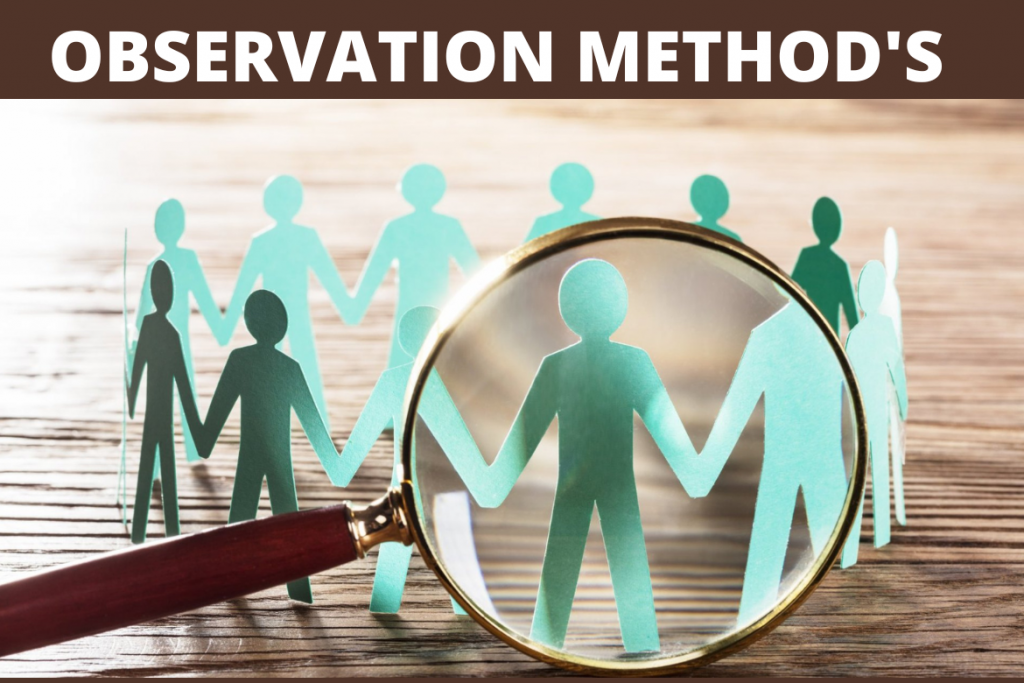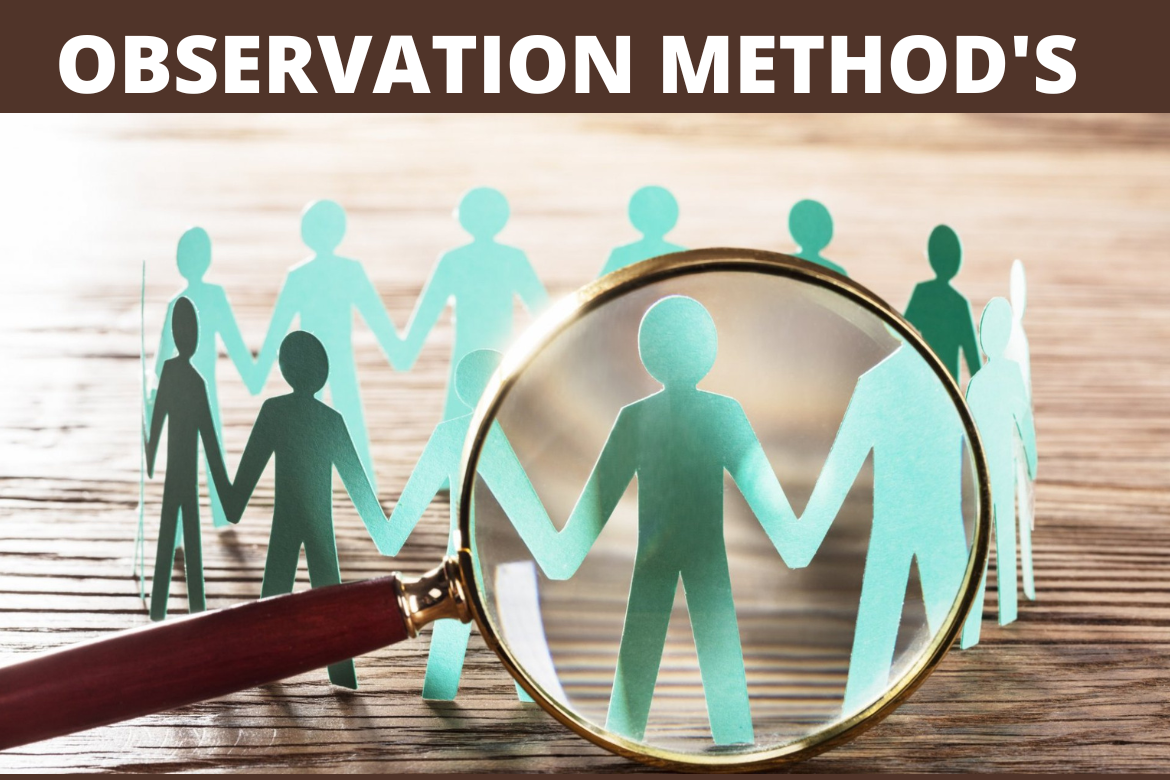Observation in Medical Field means to see something with a special purpose. It is a fact to collect information that is directly related to the knowledge of the information collector. It is the qualitative means of having information from a reliable source. Ideally, observation is a psychological methodology. In educational fields, observation has a diversified perspective of uses.
In another sense, observation is defined as a psychological skill. It consists of jotting down the phenomena of life activities as they occur. It requires the correct use of the senses of seeing, hearing, touching, and smelling at rest, in movements, and in activities. Poor observation would always lead to poor learning.
Sayings About Observation In Medical Field
P.V Young says-‘’ Observation may be defined as systematic viewing, coupled with consideration of the seen phenomenon’’.
Karl E. Weick cites ‘’An observational method is defined as the selection, provocation, recording, and the recording of that set of behaviors and setting concerning organism ‘in situ, which is consistent with cherished aims’’
Observation In Medical Field: Aims & Objectives of Observation
Its objective is to gain ideas about the activities, plans, programs, and participants. Ideally, Observation denotes scientifically collecting anything, any person, or any subject to keep a vigil profoundly. Information is collected through the observation method in all case studies like—historical, descriptive, laboratory tests, and experiments. Observation is made on one or various aspects of a lab test or experiment. Superficial observations are not always exact and right. People say seeing is believing. We also agree with this point.
Classifications/Kinds/Types of Observation In Medical Field

There are some aims and objectives of observation—(a) to collect data on the common behavior of the learners, (b) to collect the whole and detailed information about the social life of the learners, and (c) to inquire into getting an idea for good research. Observations are divided into two major heads. They are—(1) Participatory or Direct observation and (2) Sole or Indirect observation. Based on the features of Research, observation is subdivided into the following four categories. Such as (a) Controlled Observation, (b) Uncontrolled Observation, (c) Organized Observation, and (d) Unorganized Observation.
Direct Observation
The observer here directly takes part in collecting data and information. He goes to the workplace, mixes with people, stays there if needs be, and then jumps to a precise decision. Such a piece of primary information is very precious, but not acceptable for wider research. There is a probability of individual partiality or misconception.
Indirect Observation
The role of the observer here is ritually acknowledged and approved, but the role is unknown to others. An attempt is made indirectly to gather data and information, when and where the Direct Observation is impossible.
Controlled Observation
A controlled and artificial environment is created and the behavioral change of people is noticed. There is a fluctuation of the various elements in that environment and hence, the elements influence the people. These elements work as Independent variables and the behavior of people acts as Dependent variables. This methodology is popular in educational research.
Uncontrolled Observation
No artificial environment exists in this methodology. The observer can observe in a natural environment. Participatory or Sole drive can take place in this methodology.
Organized Observation
This is a preplanned observation. The content or subject matter is observed in a disciplinary way. The subject matter is predetermined with proper instruments. The observer goes, collects the information, analyzes, synthesizes, and then prepares a report.
Unorganized Observation
The observer directly participates in collecting data through this methodology. The researcher stays with other observers briefly to gain a minute of knowledge. He can find the ins and outs of the subject matter.
Scientific Observation
Observation is a scientific process, particularly for research scientists, who need always to keep their eyes open; they should keep observing even when asleep.
Participatory Observation
Participant observation is a field research technique, in which a researcher interacts with the normal social life of a community for a given time and collects data informally. One must have an accurate observation for correct judgment and the continuation of learning processes. The accurate observation will eventually lead to the correct identification of medical problems, which ultimately lead to correct diagnosis, treatment, and proper follow-up of patients. Our insight observations usually involve two mental activities; one is perception and the other is attention.
Observation For Medical Profession
The medical profession being a sensitive one, needs much observation. The major advantage of observation is that there is no need to memorize things. In medical science, observation is akin to an inspection procedure. One should, therefore, be clear about what should be observed. In this branch of observation, there are two major types. One is unstructured observation where no definite rules of observation are followed.
All that they need to observe the thing; they want to observe to the best of their ability. The other is structured observation, which needs a systematic way of observing things and where there are definite rules for observation; such as what is specified to be seen and what is to be recorded. By such observation, great information with supporting data is obtained from the sources.
Disadvantages of Observation In Medical Field
The disadvantage of observation is not everything is amenable to observation. Such as the sexual behavior of persons. It is difficult to observe, but it can be heard and noticed or recorded. Therefore, the case history in medical science is very important to practicing doctors. Some observations may also need a very long time to conclude.
Example: a longitudinal study. Sometimes observation may not be possible because the individual or the group may not favor observation. There are many more problems that one can come across while initiating observation. In general, people do not like to be observed or followed even for important scientific reasons. However, in an individual or a group study, there is a great variation in observation.
Observational biases are one such great problem in medical observation. Bias is a medical error in the determination of the association between exposure and the disease. Incorrect observational opinion and the possibility of bias must be considered while evaluating the situation and its relationship to its cause and effects. Besides, observational variations are also to be counted as incorrect observations.
A precise observation can create rich research. The habit of observation will promote attention. Careful observation is also called attention. A moving object attracts more attention than a static object. A large object draws our attention rather more quickly and in a better way than a smaller object.



1 comment
Excellent post. I certainly love this website. Continue the good work!